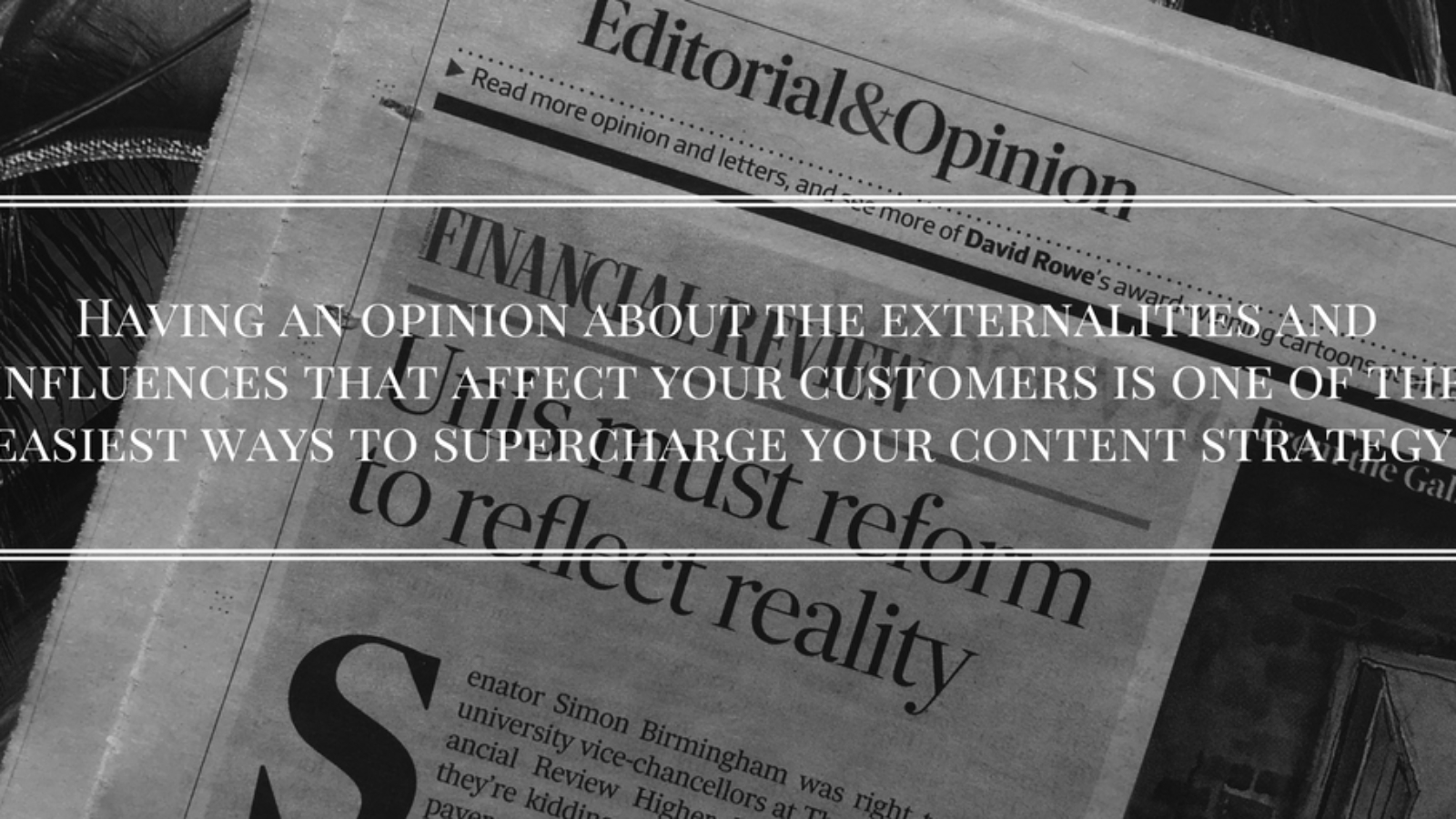In the digital world every single brand, every single company, is a publisher. If you have a website, you are publisher, if you have a Facebook page, you are a publisher. If you send clients technical guides on how to use your products, you are a publisher.
The key to being a great publisher is a strong, clearly-defined and purpose-driven editorial mission. An editorial mission is the foundation of your content strategy and defines what you’re going to talk about and share as a content creator.
What is ‘editorial’?
The term editorial has traditionally been reserved by newspapers for the section of the paper where the ‘editor’ expresses the publisher’s own views and policies on a current issue. It was always separate from the objective news ‘reporting’ of the paper that was meant to be devoid of the personal opinions of the journalist and their editor. As an example, it has long been a tradition of newspapers to use their editorial pages to endorse their preferred candidate ahead of an election. This decision is meant to be the considered wisdom of the editor or senior editorial team and until recently had the potential to swing undecided voters.
In it’s strictest definition editorial content should not be influenced by outside forces. The Sydney Morning Herald (SMH) says there is ‘no advertiser influence’ in the creation of editorial features and in all case’s the editor’s decision about content and tone are ‘final’.
Editorial is simply content that has been developed independent of outside influence, for no other purpose then providing the audience with information, insight and understanding.
However, the incredible growth of content marketing and the digital economy has seen many of these walls heavily eroded with the definition of ‘editorial’ content now encompassing a complex array of goals and influences.
Editorial as marketing
Fairfax’s Domain business unit is one brand that has used editorial to grow traffic and engagement. While the business is a relatively simple online listings business, the fact it is owned by Fairfax has provided the opportunity to use editorial as the spearhead for its marketing strategy.
In an interview last year with CMO magazine Domain’s chief marketing and editorial officer Melina Cruickshank explained how the company bought together data-driven decision making, editorial content, audience-oriented marketing and mobile-first thinking to drive a 92% increase in unique browsers in 18 months.
“We needed to bring together the journalists and audience marketers, create a new division called content and audience, and just go for it. It was a huge risk, and completely different to what everyone else had been doing. But I told him (Domain Group CEO Anthony Catalano) it was all about our journalists and our content. Domain’s strengths are mobile and editorial. People are obsessed with property, and if we can communicate to them in an authentic manner about property and gain their trust, we’re going to grow our reach.”
Editorial Mission
Editorial content is no longer the exclusive purview of pure media companies. Every brand that wants to communicate with customers should have an editorial mission that clearly articulates what they hope to achieve from their content. It should define you as a brand and what you stand for in the eyes of your stakeholders, both internal and external.
At the core of editorial and its value to an audience is the substance and integrity of the opinions that it carries. Having an editorial mission that is simply about the features of your products and services does not count. Having an opinion about the externalities and influences that affect your customers is one of the easiest ways to supercharge your content strategy.
When developing our MBA News Australia website a few years ago we thought long and hard about our editorial mission. We needed to speak to both our audience (potential MBA students) and our customers (the business schools and universities that want to reach potential students). We needed a mission that guided every content decision we made. Ultimately we came up wth three guiding editorial principles:
- Inform – provide the latest news, views and information about the courses available to people considering embarking on an MBA.
- Educate – we want to help our readers understand the many options available to them for postgraduate business education
- Advocate – be a champion for MBAs and the pursuit of management excellence.
Staying true to this mission has seen the site establish a reputation with both readers and advertisers as the first-stop for information about studying for an MBA in Australia.
Taking the time to define what your content means to your audience via an editorial mission is the first step in developing an effective content strategy. So get to it.


